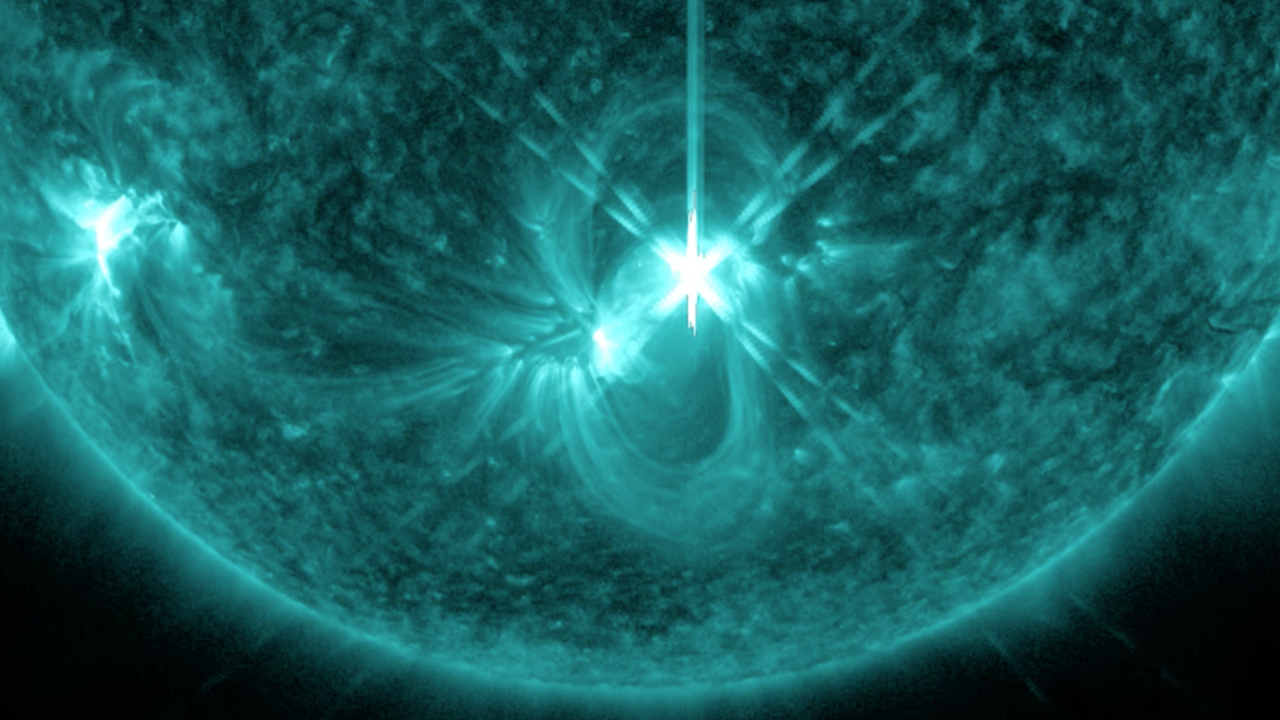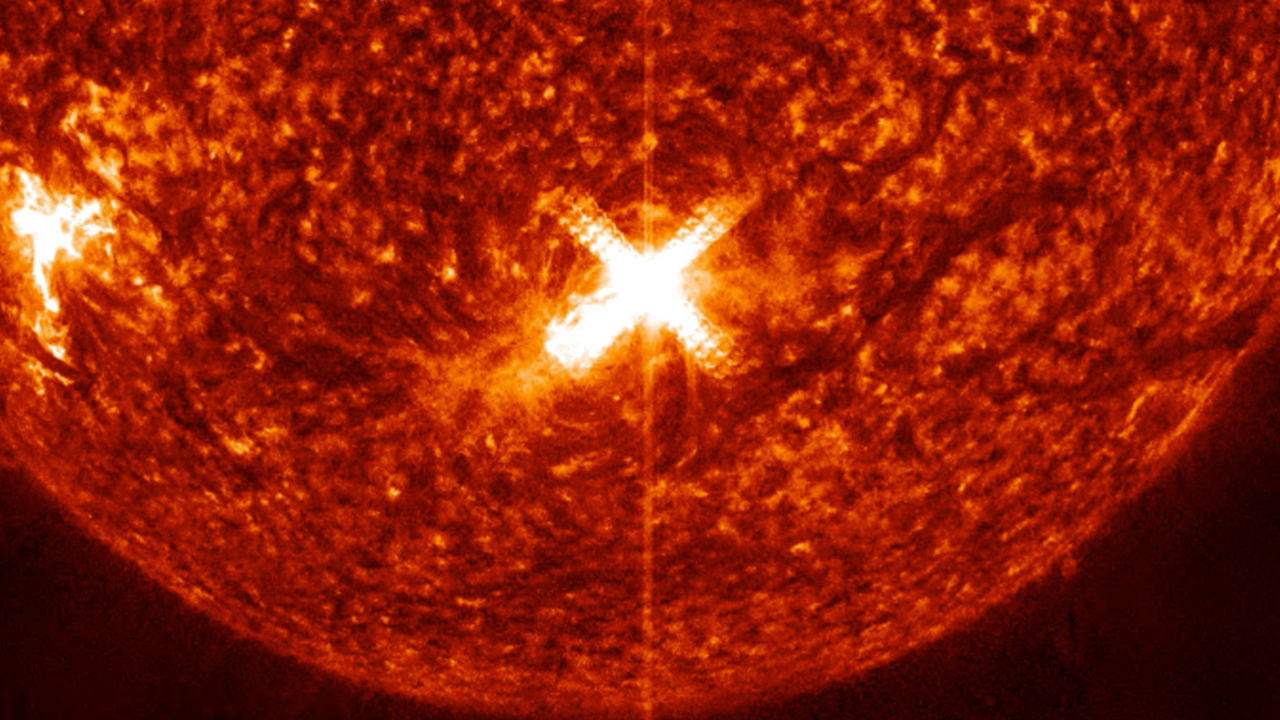A 'mixed up' sunspot just fired off a huge solar flare
The sunspot is within range of Earth, but there is no firm forecast for auroras yet.
Scientists are keeping an eye on a sunspot that fired off an X-class flare while "having an identity crisis," according to SpaceWeather.com.
Amplified aurora displays are possible if a coronal mass ejection of charged particles emerges from the "mixed-up" sunspot AR3006, which pointed its flaring blast toward Earth Tuesday (May 10) at 9:55 a.m. EDT (1355 GMT).
The solar flare was caught on camera by NASA's Solar Dynamics Observatory and spurred a radio emission alert by the National Oceanic and Atmospheric Administration (NOAA), amid a reported shortwave radio blackout in the Atlantic Ocean region.
Related: The sun's wrath: Worst solar storms in history

AR3006's polarity is the reverse of what scientists are expecting, which makes the sunspot "interesting and dangerous," SpaceWeather.com stated. (Sunspot polarity is governed by the current solar cycle.) "If AR3006 flares today, it will be geoeffective. The sunspot is directly facing Earth," the website added.
According to NOAA's Space Weather Prediction Center, which monitors solar flares and other outbursts, a coronal mass ejection (CME) may follow today's flare. CMEs are massive outbursts of solar material burped out by the sun, and scientists can predict whether one will follow a flare based on the radio signature. As of about 12 p.m. EDT (1700 GMT), the agency said that a CME "may be likely," pending further observations.
In general, auroras may happen if a CME happens to intersect with our planet's magnetic field lines. Usually the result is a harmless sky show as atmospheric molecules of gas glow.
Get the Space.com Newsletter
Breaking space news, the latest updates on rocket launches, skywatching events and more!
Today's flare was classified as an X1.5-class event, making it on the weak side of the strongest category of flare. The sun has fired off several explosions of about the same strength in the past month, along with a bunch of moderate-sized flares. The sun's peak activity is expected to occur in 2025, but there are numerous sunspots on its surface right now.

More rarely, CMEs can generate trouble in effective infrastructure such as power lines and satellites, which is why scientists keep such a close eye on space weather through numerous missions gazing at our sun.
Both NASA and NOAA monitor the sun all the time; in addition, NASA operates the Parker Solar Probe mission, which is periodically zipping very close to our sun to understand how its superheated outer atmosphere affects solar flares and other phenomena.
Follow Elizabeth Howell on Twitter @howellspace. Follow us on Twitter @Spacedotcom or on Facebook.
Join our Space Forums to keep talking space on the latest missions, night sky and more! And if you have a news tip, correction or comment, let us know at: community@space.com.

Elizabeth Howell (she/her), Ph.D., was a staff writer in the spaceflight channel between 2022 and 2024 specializing in Canadian space news. She was contributing writer for Space.com for 10 years from 2012 to 2024. Elizabeth's reporting includes multiple exclusives with the White House, leading world coverage about a lost-and-found space tomato on the International Space Station, witnessing five human spaceflight launches on two continents, flying parabolic, working inside a spacesuit, and participating in a simulated Mars mission. Her latest book, "Why Am I Taller?" (ECW Press, 2022) is co-written with astronaut Dave Williams.









